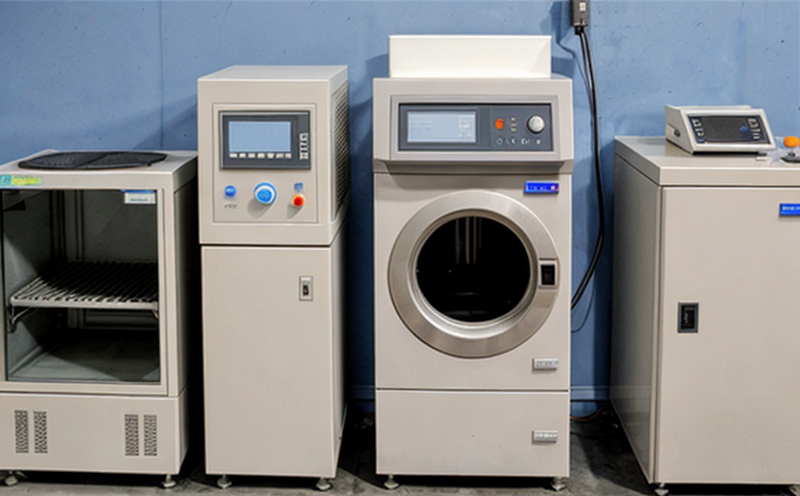OECD TG 318 Dispersion Stability of Nanomaterials in Simulated Environments
The OECD Test Guideline 318, titled “Dispersibility and Stability of Nanomaterials in Water-based Systems (OECD TG 318),” is a critical method for assessing the behavior and stability of nanomaterials in water-based systems. This test is essential for understanding how nanomaterials interact with their environment, which is crucial for ensuring product safety and regulatory compliance.
This guideline was developed to provide a standardized approach for testing the dispersion and stability of nanomaterials in simulated environments under conditions that mimic real-world scenarios. The OECD TG 318 method focuses on quantifying the extent to which nanomaterials can be dispersed into the water phase, how they remain stable over time, and whether any agglomeration or sedimentation occurs.
The test is particularly relevant for industries dealing with nanotechnology products such as cosmetics, pharmaceuticals, and environmental remediation. By ensuring that nanomaterials disperse effectively and remain stable in water-based systems, this guideline helps prevent potential hazards associated with the release of nanoparticles into the environment or unintended human exposure.
The OECD TG 318 method involves several key steps: preparation of a colloidal dispersion of the test material, dilution to appropriate concentrations, incubation under specified conditions, and characterization of the dispersed state. The guideline specifies detailed procedures for each step to ensure consistency and reproducibility across different laboratories.
The significance of this testing method cannot be overstated, especially given the increasing use of nanomaterials in various applications. Regulatory bodies worldwide are beginning to recognize the importance of such standardized methods, ensuring that products containing nanomaterials meet stringent safety standards before reaching the market.
| Key Parameters | Description |
|---|---|
| Initial Concentration of Nanomaterials | The starting concentration used for dispersion stability testing. |
| Type of Water Medium | The specific type of water (e.g., deionized, tap) used in the test. |
| Incubation Time | The duration over which the nanomaterials are incubated to assess stability. |
| Incubation Temperature | The temperature at which the samples are maintained during the test. |
| Stirring Speed | The rate of stirring to maintain uniform dispersion. |
| Particle Size Distribution Analysis | Techniques used to measure the size distribution post-incubation. |
| Sedimentation and Aggregation Index Calculation | Methods for quantifying sedimentation and aggregation over time. |
The OECD TG 318 is part of a broader framework designed to provide consistent, reliable data on the behavior of nanomaterials. This ensures that regulatory bodies can make informed decisions based on scientifically robust evidence. By adhering to this guideline, laboratories and researchers can contribute to the development of safer products while complying with international standards.
The test results are typically reported in terms of dispersion stability indices, particle size distribution, sedimentation rates, and aggregation levels. These metrics provide valuable insights into the potential environmental impact or human health risks associated with nanomaterials.
Benefits
The OECD TG 318 provides numerous benefits to various stakeholders involved in the development and regulation of nanotechnology products. For quality managers, this guideline offers a standardized method for assessing product performance, ensuring consistency across different batches or production runs.
Compliance officers can rely on the OECD TG 318 to demonstrate adherence to international safety standards, thereby reducing the risk of regulatory non-compliance and potential legal challenges. R&D engineers benefit from this method by gaining insights into the behavior of nanomaterials under different conditions, which aids in optimizing product formulations.
For procurement teams, the OECD TG 318 serves as a benchmark for evaluating suppliers' compliance with industry standards. This ensures that only high-quality materials are used in final products, enhancing overall product reliability and safety.
In addition to these direct benefits, the OECD TG 318 also contributes to broader societal goals by promoting responsible innovation in nanotechnology. By ensuring that nanomaterials are safe for both human health and the environment, this guideline supports sustainable development practices.
International Acceptance and Recognition
The OECD TG 318 has gained widespread recognition from regulatory bodies around the world. It is widely accepted in countries that adhere to the Organization for Economic Co-operation and Development (OECD) guidelines, including major industrial nations like the United States, European Union member states, Japan, and Australia.
Many national and regional standards organizations have adopted OECD TG 318 as a basis for their own regulations. For example, the US Environmental Protection Agency (EPA) includes this test in its risk assessment frameworks for nanomaterials. Similarly, European Union directives that pertain to chemical safety often cite OECD TG 318 as a recommended practice.
The international acceptance of OECD TG 318 underscores its importance not just within individual countries but across borders. This global recognition ensures that the results obtained from this testing method are universally applicable and comparable, fostering collaboration between researchers and regulatory agencies worldwide.
By aligning with internationally recognized standards like OECD TG 318, organizations can enhance their reputation as leaders in responsible innovation. Moreover, compliance with these guidelines helps businesses navigate complex regulatory landscapes more effectively, reducing the likelihood of costly delays or failures during product development.





